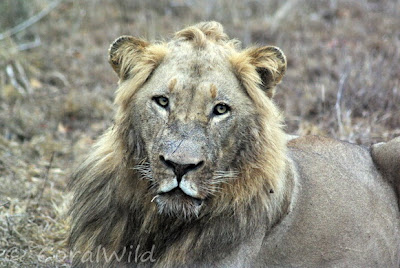 |
| Purple Tree Wistaria |
The Knob Thorn trees heralded spring’s arrival with thick creamy canopies. The Long Tail Cassia was next, buds on bare branches opening into bright yellow flowers creating brilliant splashes of summer sunshine in the drab winter bushveld. Now the Sausage Trees, Weeping Boer Beans and Flame Climbing Bush willow are flowering in shades of red from brilliant scarlet to deep ruby.
If you are lucky you will spot the occasional touch of purple of the Tree Wisteria.
Mopani trees, only a few weeks ago ablaze in their russet, green and gold are now leafless, the ground carpeted with their brown leaves.
(please click on photos to enlarge)
 |
| Mazithi waterhole - one of my favourites |
 |
| The Southern giraffe |
The waterholes are crowded with wildlife delighting in the water, but ever cautious of the hungry predators.
The giraffe’s incredibly long tongue is clearly visible as it strips the new leaf buds off the all but bare branches.
The bush is a muted grey brown beige, framed by the black trunks of the Tamboti and accentuated by the occasional brilliant spring green of an early acacia.
On barren hillsides the “snow” white thorns of the Flaky Bark Acacia thickets stand out along the roadsides.
The baboons perch gingerly in the Knob Thorns browsing greedily on tasty flowers.
The Marula trees stand majestic in their grassy settings showing an odd tendency for new leaves to appear on just one branch at a time.
 |
| Leopard in the Sabi Sand Reserve |
Ribs stand out on the impala as they drink – even they feel the lack of forage at this time of the year.
Jackal Berry Trees reach to the sky from the drainage lines shimmering yellow in their cloaks of old leaf.
“Dust devil” whirlwinds spring up at random causing momentary, dusty mayhem.
Cool nights, cool breezes alternate with blazingly hot days where winds blow straight from the “furnaces” of the Kalahari.
 |
| Immature Martial Eagle, on a kill |
Many birds are in their mating pairs, notable among them the Bateleur, Tawny and Martial Eagles.
In the distance a Secretary Bird balances precariously on it’s tree top nest and closer by, one can glimpse a White Backed Vulture chick raising it’s head to mother.
The Fish Eagle feasts on a catfish trapped in the last muddy pool of a dry waterhole.
 |
| Hippo at Lake Panic |
The sky has turned a pale, dusty grey, stained by the smoke of the endless grass fires on the Great Escarpment and the dust blown up from the dry and thirsty earth
…………………….. when will the rains arrive?























